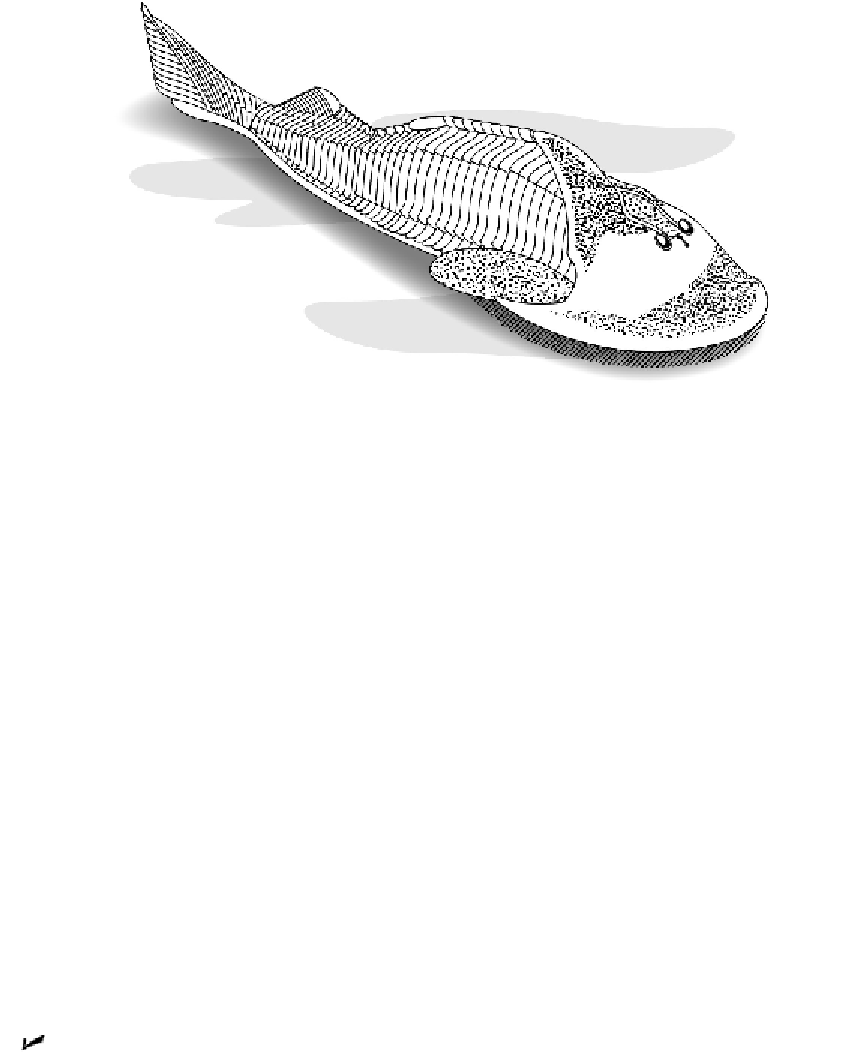Geology Reference
In-Depth Information
Placoderms
Placoderm fish flourished in the middle to late Paleozoic but do not have any living an-
cestors today; by the end of the Devonian period they were extinct. The name
placo-
derm
means “plate-skinned” and refers to the heavily armored skin of these fish. They
survived in both saltwater and freshwater habitats. Some of them, such as the
Dunkleosteus,
were frightening predators with razor-sharp teeth and body lengths of 10
to 12 meters (more than 30 feet)! The heavily armored head of a Dunkleosteus is illus-
trated in Figure 19-6.
Cartilaginous fish
The
cartilaginous
fish group includes modern sharks and stingrays. These creatures
have jaws and teeth, but their internal skeleton is made of cartilage instead of bone.
Car-
tilage
is a flexible, sturdy, organic material that is found in many other animals as well;
you are most familiar with it because it's what shapes your ears.
Bony fish
The bony fish are by far the largest and most diverse fish group. Many of the subgroups
of bony fish still exist today, and it appears that amphibians evolved from bony fish. The
bony fish are separated into two groups:
Ray-finned fish:
This is the type of fish you are most familiar with. These fish have
fins supported by tiny bones that spread out and, when moved, propel the fish

